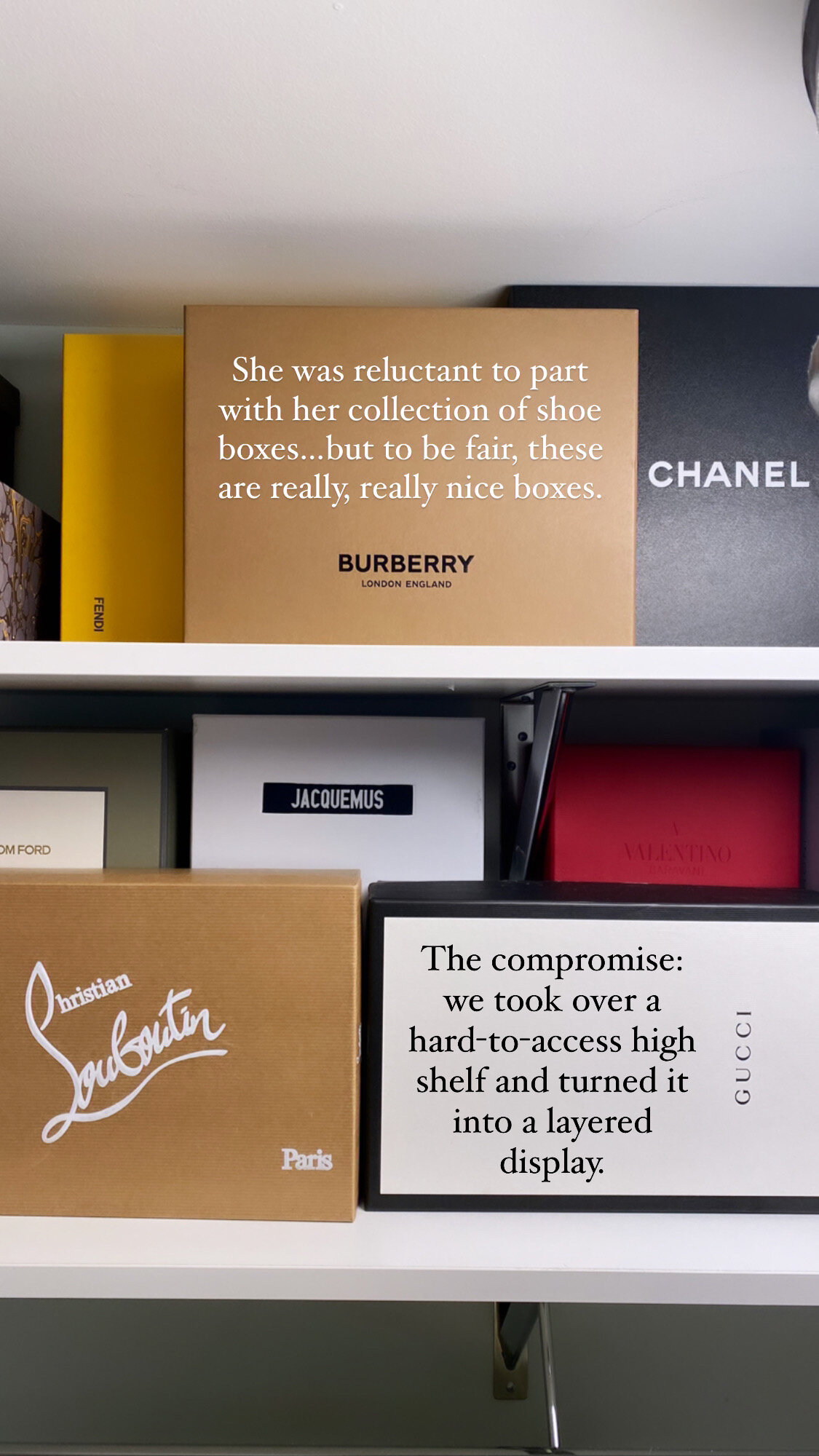Storing Designer Shoes
One of the most important things you can do for your shoes, especially if you are a “shoe person,” is to let the girls b r e a t h e.
There are technical reasons for this (proper ventilation and easy inspection for damage, among others), but there is also a factor of pride. Being able to see and appreciate your shoes prolongs the magic you felt when you first bought them.
…I realize I may have lost some non-shoe people here.
For a recent project, we helped a client re-work her shoe collection. She had a nice, dedicated interior room within her closet where she wanted to keep her shoes. When we started, the room was full of the shoes with many still in their original packaging. Designer shoes generally come with a beautiful, sturdy box, a few extra pieces and parts, and for some “big girl” shoes: authentication materials and certificates.
She did not want to build any shelving or invest a ton in storage just yet, so we came up with a plan that was budget-friendly but still protected and displayed her investments.
BEFORE
The existing bar was holding some dresses, but not enough that we couldn't repurpose that area for more shoe storage.
The built-in white shelving really shone once we removed the boxes and gave the shelves a nice scrub.
For this client, step one was to remove all shoes from their boxes, make sure we had matches, inspect for damage, and sort out box contents:
Wrapping/stuffing paper: we kept the super nice, acid-free sheets to use for shaping, and discarded the rest.
Boxes: we lined these up in the hall. Our client told us she was attached to these boxes, and that’s okay. We settled on keeping a few favorites (have you seen an Alaïa shoe box??) and discarding any other multiples or boxes with rips or tears.
Extra parts and authentication cards: We combined these into one small box for future referencing if she needs it.
Shoe dusters: these things do come in handy for travel, so we neatly folded each of them and stored them (alphabetically) in one of the sturdier shoe boxes. I think she was a Gucci green box.
From there, we took tons of measurements and mapped out the best solution. In this case (space and budget), there was a deep enough area within the small closet room to place a wall of clear shoe bins (we used these boys from the Container Store). We added lids to the top row to prevent dust and add a little bonus storage on top for sunglasses and accessories.
The existing built-in shelves are the first thing she’ll see when she walks in, so we wanted that to be the most dramatic visual moment for her. She has a truly stunning collection of pumps, and we decided on all black with a stripe of red at the top. It’s hot, I won’t lie.
The clear cases already bounce around light in a fun and playful way, so we put her non-black shoes in there. We dedicated one bin to each shoe for breathing room and more visual impact. We started with the lighter colors at the top and worked down from there. This reads nicely overall (lighter on top, darker/more saturated on bottom) and is a good general rule to follow.
We used the hard-to-reach shelves at the very top (not even pictured) to store the shoe dusters and spare parts boxes, since she won’t access those often.
The best part? The multi-hued disco ball shoes. They get to sit out on their own, sideways. After all, what is the point of owning shoes like that if one can’t bask in their shimmering goodness?












